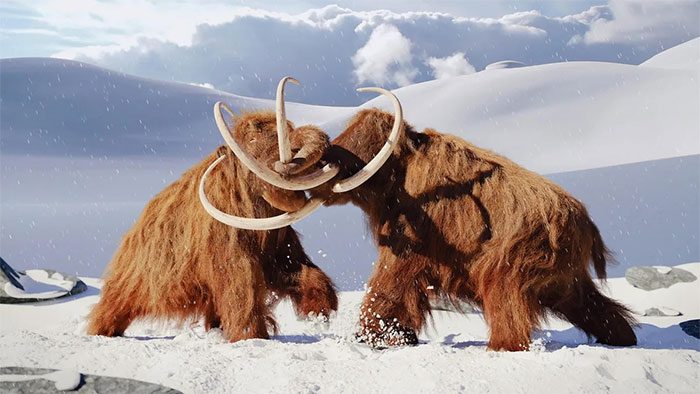Colossal Biosciences, an American biotechnology company, has announced that the first extinct species they are attempting to revive could be born as early as 2028.
In an interview with Live Science, Colossal Biosciences, known for its project to resurrect several extinct animals, shared insights about three ancient species that may soon make a comeback.
With collaboration from many renowned scientists, this American research team has been working to bring back the dodo bird (Raphus cucullatus), the Tasmanian tiger (Thylacinus cynocephalus), and the woolly mammoth (Mammuthus primigenius).
They now state that these species, particularly the woolly mammoth, are “closer to reality.”

The woolly mammoth is the most discussed resurrection target – (Graphic: iStock).
Ben Lamm, co-founder and CEO of Colossal Biosciences, stated their goal is to produce the first “mammoth-like calf” by 2028, and that “it is very likely that another species could be seen before then.”
The woolly mammoth lived in the Arctic from 300,000 to 10,000 years ago, with some specimens found perfectly preserved in Siberian ice, providing valuable DNA samples.
To create mammoth calves, they will identify genes that encode the most iconic physical traits of the woolly mammoth, such as shaggy fur, curved tusks, fat reserves, and a domed skull.
These genes will then be incorporated into the genomes of closely related Asian elephants, which have genetic similarities (Elephas maximus).
According to the most effective proposed method, the resurrection will occur gradually: with each generation of mammoth hybrid elephants born, mammoth genes will be added until a creature that is almost genetically pure mammoth is produced.
“Resurrection can mean many different things, and our ability to resurrect depends on how we define it,” said Professor Love Dalén from Stockholm University, who is involved in the project with Colossal Biosciences.
Professor Dalén and his colleagues have come close to sequencing the entire genome of the woolly mammoth, but certain DNA regions, such as repetitive code sequences, remain challenging.
So far, they have obtained over 60 partial woolly mammoth genomes. Gene insertion into the first elephant will begin after they successfully decode the complete mammoth genome.
This scientific team also revealed two other exciting pieces of information: for the dodo project, they have almost a complete genome; with the Tasmanian tiger, things are even more favorable.
A process similar to the mammoth resurrection will be carried out by inserting dodo genes into chickens and Tasmanian tiger genes into a marsupial species.

Dodo bird – (Photo: Colossal Biosciences).
In fact, over 20 years ago, humanity revived an extinct species in just 7 minutes.
The revived lineage was the Pyrenean ibex (Capra pyrenaica pyrenaica), from the last known member of this subspecies, a female named Celia, who died in 2000.
In 2003, an international research team implanted DNA collected from Celia before her death into an enucleated egg cell from a domestic goat.
However, the animal born from that experiment died shortly after birth due to severe lung defects.
Reviving a species extinct for thousands of years will be much more challenging, but with today’s scientific advancements, it may not be too far-fetched.


















































